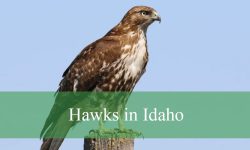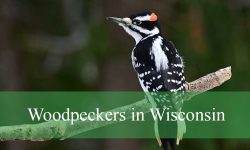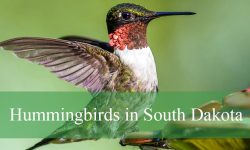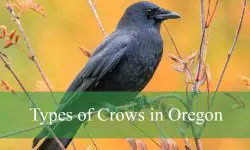The state of Wyoming provides a perfect stage for falcons, raptors admired for their agility, sharp vision, and powerful hunting style. From open prairies to towering cliffs, these raptors adapt well to the state’s diverse landscapes.
Five falcon species can be found here, including the widespread American Kestrel, the powerful Prairie Falcon, and the rare Gyrfalcon. Each species brings its own beauty and role to Wyoming’s ecosystems, offering birdwatchers a variety of thrilling encounters.
This guide explores the five types of falcons in Wyoming, with pictures, identification details, and insights into their habitats and behaviors. It also highlights the best times and places to see these remarkable birds.
Different Types of Falcons Found in Wyoming
American Kestrel (Falco sparverius)
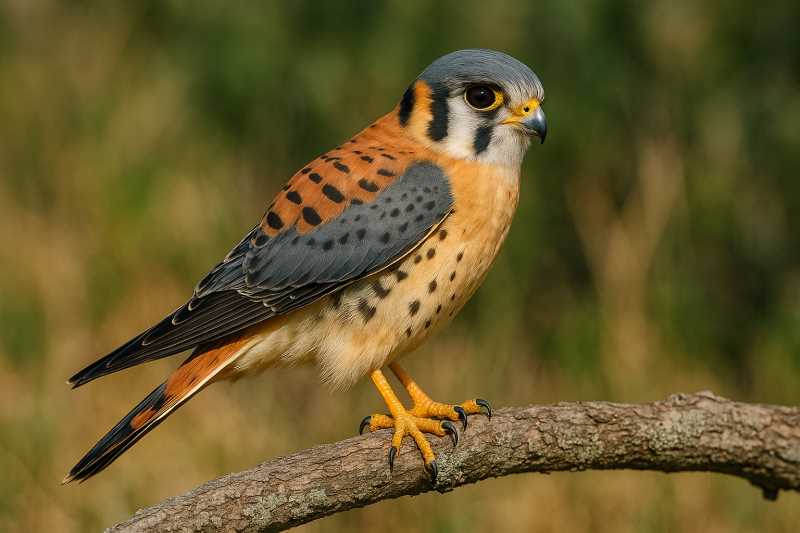
The American Kestrel is the smallest falcon found in Wyoming, often spotted perched on fence posts, utility wires, or hovering above open fields in search of prey. Males are easily identified by their blue-gray wings, rusty back, and distinct facial markings, while females are more brownish overall with finely barred plumage. Despite their size, kestrels are bold hunters with sharp eyesight that helps them detect movement from impressive distances.
These falcons primarily feed on insects, small mammals, and occasionally small birds. During summer in Wyoming, grasshoppers and crickets form a large portion of their diet, while in winter, rodents become more important. They use their characteristic hovering flight to pinpoint prey before diving quickly to capture it.
American Kestrels favor open country, meadows, and agricultural areas across Wyoming. They often nest in cavities, using natural tree holes or man-made nest boxes. Their adaptability allows them to thrive in both rural landscapes and near human settlements.
In Wyoming, kestrels can be seen year-round, though their numbers are highest in spring and summer. They are a common sight along highways, where they perch and hunt in the surrounding grasslands. Their sharp “klee-klee-klee” call is another way to detect their presence.
Merlin (Falco columbarius)
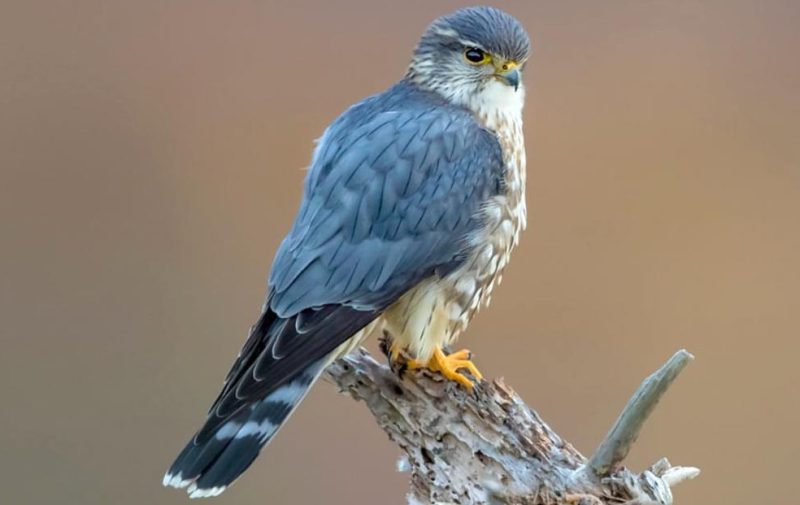
The Merlin is a small, powerful falcon that visits Wyoming during migration and in some areas as a winter resident. Compact in build, this species has pointed wings and a strong flight style that makes it easily distinguishable in the sky. Adult males are slate-gray above with a lighter underside, while females and juveniles are brown with streaked underparts.
Unlike the hovering kestrel, Merlins are pursuit hunters that chase down their prey with speed and agility. They primarily feed on small birds, such as sparrows and warblers, which they capture in midair after a fast, direct chase. Their hunting style is relentless, relying on sheer speed rather than stealth.
In Wyoming, Merlins prefer open habitats, forest edges, and grasslands during migration. They are sometimes seen around towns and parks, especially where songbirds gather in large numbers. Their powerful flight and rapid wingbeats make them a striking presence even in urban areas.
While most Merlins pass through Wyoming in spring and fall, some stay during the colder months, particularly in the central and eastern regions. Birdwatchers may spot them perched on treetops, surveying the area before launching into flight.
Prairie Falcon (Falco mexicanus)
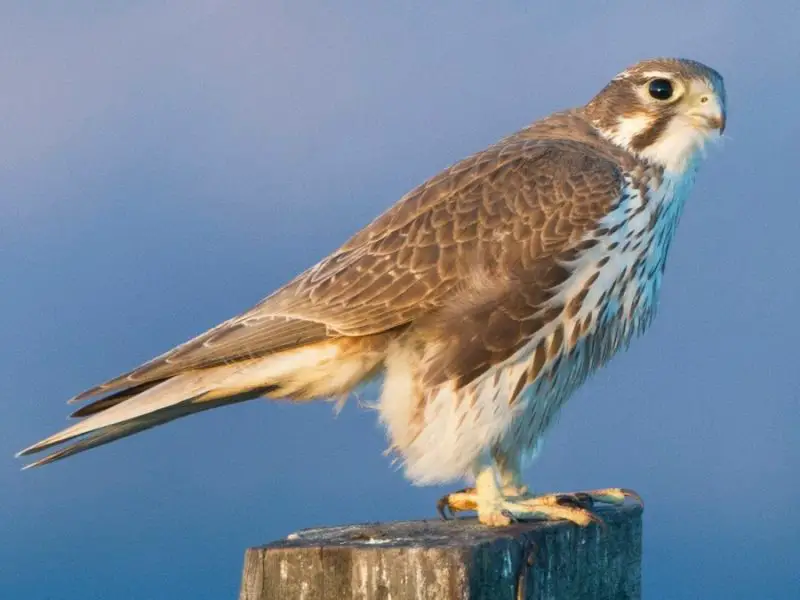
The Prairie Falcon is one of the most iconic raptors of Wyoming’s wide-open landscapes. Slightly smaller than the Peregrine Falcon, this species has brownish upperparts, pale underparts with dark markings, and a distinctive dark patch in the axillary area of its wings. Its long pointed wings and swift flight make it a formidable hunter across the plains.
Prairie Falcons feed on a variety of prey, including small mammals like ground squirrels and jackrabbits, as well as birds such as doves and meadowlarks. They often hunt by flying low over the ground before suddenly rising to surprise prey, or by stooping from high perches on cliffs.
These falcons are well-adapted to Wyoming’s arid regions, thriving in deserts, canyons, and grasslands. They nest on cliff ledges, where they raise their young with excellent vantage points over the surrounding terrain. Their choice of nesting sites makes them more common in the western and southern parts of the state.
Unlike some other falcons, Prairie Falcons are residents in Wyoming throughout the year. They are most frequently observed in open spaces during winter when they patrol for prey, making them a favorite among raptor enthusiasts. Their presence is a hallmark of the rugged western environment.
Peregrine Falcon (Falco peregrinus)
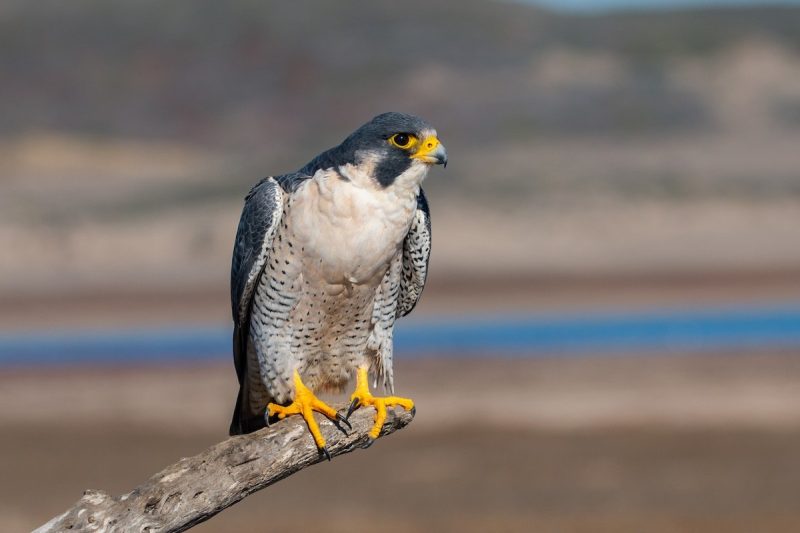
The Peregrine Falcon is one of the most admired raptors in Wyoming, celebrated for its incredible speed that can reach over 200 miles per hour during a hunting stoop. Adults have a striking appearance, with blue-gray wings, barred underparts, and a bold black hood and facial markings. Their long, pointed wings and powerful flight make them unmistakable in the sky.
Peregrines are renowned bird hunters, preying mostly on medium-sized species such as pigeons, shorebirds, and waterfowl. They strike with astonishing precision, knocking prey out of the air with their talons before circling back to retrieve it. Their hunting prowess has earned them the reputation as one of the most skilled aerial predators in the world.
In Wyoming, Peregrine Falcons favor cliffs, river valleys, and mountain ranges, particularly in the western and central parts of the state. They often choose sheer rock faces for nesting, giving them excellent vantage points and security. Conservation efforts, including nest monitoring, have supported their successful return after past population declines.
These falcons can be observed in Wyoming mainly during the breeding season, from spring through late summer. Birdwatchers may spot them in Yellowstone and Grand Teton National Parks, where they soar high above the rugged landscapes. Their sharp, loud calls often echo across the cliffs they inhabit.
Gyrfalcon (Falco rusticolus)
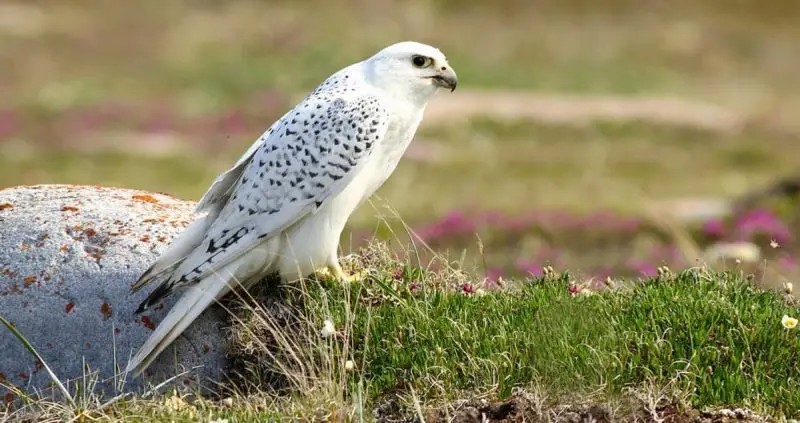
The Gyrfalcon is the largest falcon in the world and a rare winter visitor to Wyoming. This powerful raptor comes in several color morphs, ranging from nearly pure white to dark gray, with many individuals showing mixed plumage. Its broad wings and large body distinguish it from other falcons, giving it a commanding presence in flight.
Unlike smaller falcons, Gyrfalcons rely on strength and endurance rather than sheer speed. They hunt medium to large birds, including grouse and waterfowl, and sometimes mammals such as hares. Their hunting style often involves prolonged chases over open terrain, a display of stamina that reflects their adaptation to harsh northern environments.
In Wyoming, Gyrfalcons are most often seen in open country, particularly in the eastern plains and along large rivers during the colder months. They are highly nomadic in winter, moving south from the Arctic in search of food. Spotting one in Wyoming is considered a rare and exciting encounter for birders.
Because of their limited presence, the best chance to see a Gyrfalcon in Wyoming is during midwinter, when they occasionally venture into areas with abundant prey. Their rarity makes them a prized sighting, and many birdwatchers consider them one of the ultimate raptors to observe in the state.
Best Time and Places to See Falcons in Wyoming
Wyoming offers incredible opportunities for falcon watching thanks to its mix of mountains, grasslands, and open plains. The best time to see falcons depends on the species. Year-round residents like the American Kestrel and Prairie Falcon can be spotted in every season, while migrants such as the Merlin and Peregrine Falcon are more common during spring and fall. Winter is the rare chance to encounter the elusive Gyrfalcon as it drifts south from the Arctic.
Some of the best locations for falcon watching include Yellowstone National Park and Grand Teton National Park, where Peregrine Falcons often nest on cliff faces. Red Desert and the surrounding sagebrush plains are prime habitats for Prairie Falcons, while kestrels are widespread along farmlands and highways across the state. For winter raptor enthusiasts, the Platte River Basin and eastern Wyoming grasslands sometimes yield sightings of Gyrfalcons and overwintering Merlins.
Early morning and late afternoon provide the best viewing conditions, as falcons are most active during these times. Bringing binoculars or a spotting scope enhances the experience, especially in wide-open landscapes where these raptors soar at great heights. Wyoming’s diverse habitats ensure that with patience and careful observation, falcon encounters are both frequent and rewarding.
FAQs about Falcons in Wyoming
How many species of falcons can be seen in Wyoming?
Wyoming hosts five falcon species: the American Kestrel, Merlin, Prairie Falcon, Peregrine Falcon, and the rare winter visitor, Gyrfalcon.
Are falcons common in Wyoming?
Yes, species like the American Kestrel and Prairie Falcon are common and widespread, while Peregrines are more localized in mountain ranges. Merlins are regular migrants, and Gyrfalcons are rare but possible in winter.
Where is the best place to see Peregrine Falcons in Wyoming?
The best places are Yellowstone National Park, Grand Teton National Park, and rugged cliff areas across the western part of the state, where Peregrines nest and hunt.
Can falcons be seen in urban areas of Wyoming?
Yes. American Kestrels often live near farms and towns, and Merlins may pass through cities during migration. Peregrines sometimes adapt to tall structures that mimic cliffs.
When is the best season to look for falcons?
Spring and summer are best for kestrels, prairie falcons, and nesting Peregrines. Fall migration brings Merlins, while winter birders have a chance to see Gyrfalcons.



